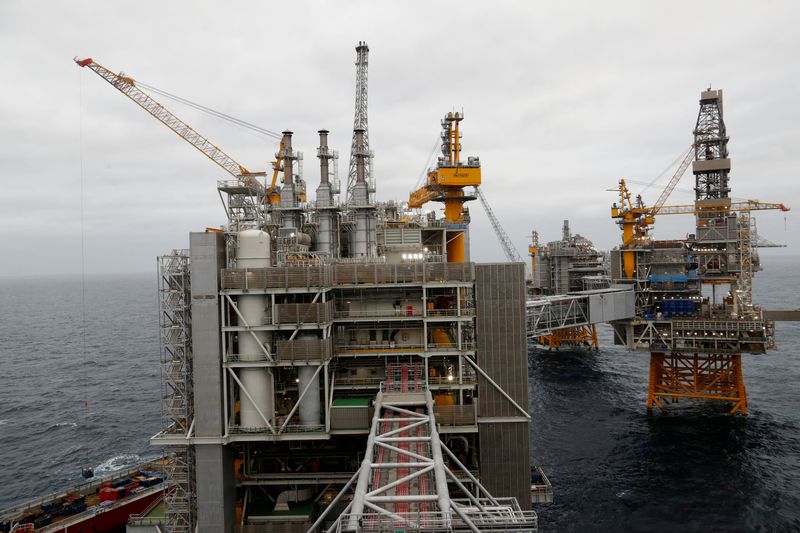By Nora Buli and Nerijus Adomaitis
OSLO (Reuters) - Norway's Equinor said on Thursday it must rework its offshore wind plans at home after the government decided that the first such plants can only supply domestic power users and not link up with other countries.
Equinor has teamed up with Germany's RWE and Norwegian aluminium producer Norsk Hydro (OTC:NHYDY) to bid for ocean acreage to build wind turbines near the maritime border with Denmark, labelled Soerlige Nordsjoe II.
The government on Wednesday announced that the first offshore wind farms to be built in that area will not be allowed to connect to foreign markets via so-called hybrid connections, and that the power can thus only be sent to Norway.
"This is a case that is quite different from the one that we, Norsk Hydro and RWE have been preparing for," the head of Equinor's renewable energy business, Paal Eitrheim, told Reuters in an interview on Thursday.
"Our starting point for Soerlige Nordsjoe II has been to develop a strong business case based on a hybrid type of model," he said.
Hybrid cables have become a hot topic in Norway as households and businesses were hit by a spike in power prices. Continued electricity exports, despite low water reservoir levels, are one of the factors for high prices.
Some energy dependent businesses and labour unions have called on the centre-left government to prevent more international power links from being built, including hybrid cables.
As a result of the decision to prevent exports, the initial offshore wind developments could become reliant on government support in order to be built, Labour Party Prime Minister Jonas Gahr Stoere said on Wednesday.
By contrast, if the offshore wind turbines could connect to multiple countries, profitable business models could have been developed without subsidies, Eitrheim said.

"Norway is very high on our agenda, but we also need to make sure that we have the possibility of developing robust business cases, and that we don't know yet," he added.
The government has said it will consider allowing a second phase of the Soerlige Nordsjoe II developments to connect to foreign markets.